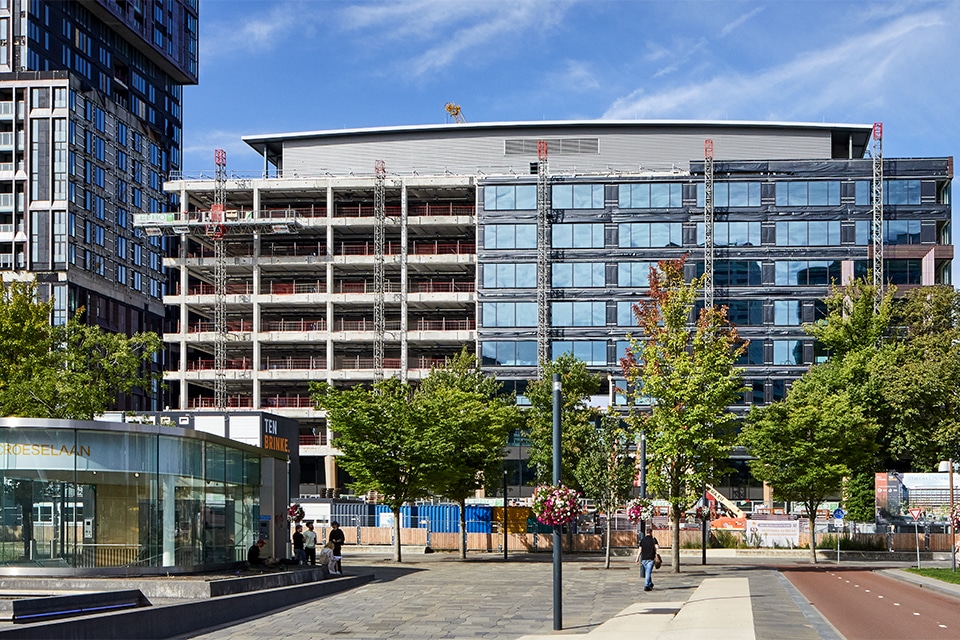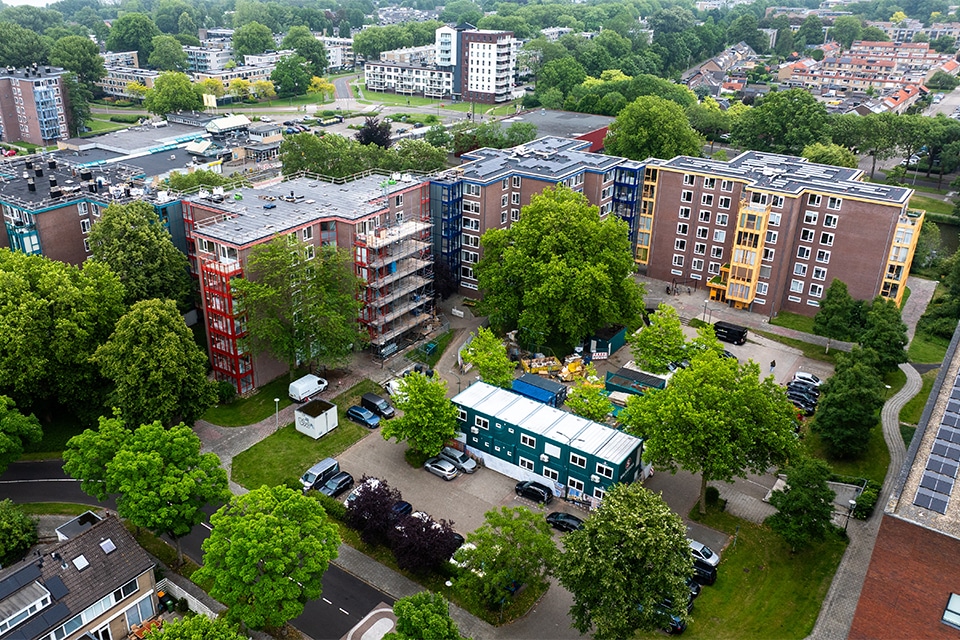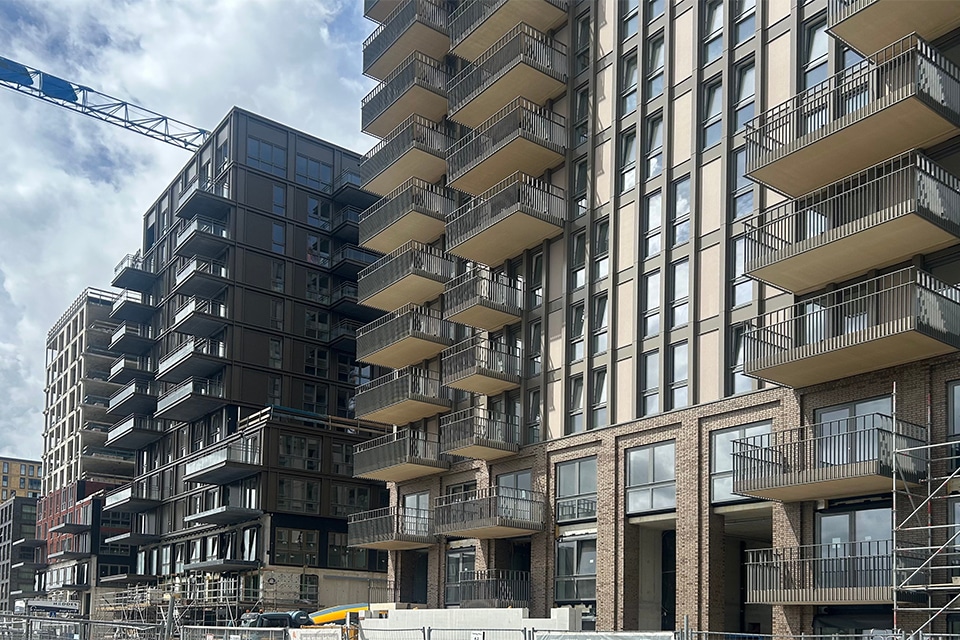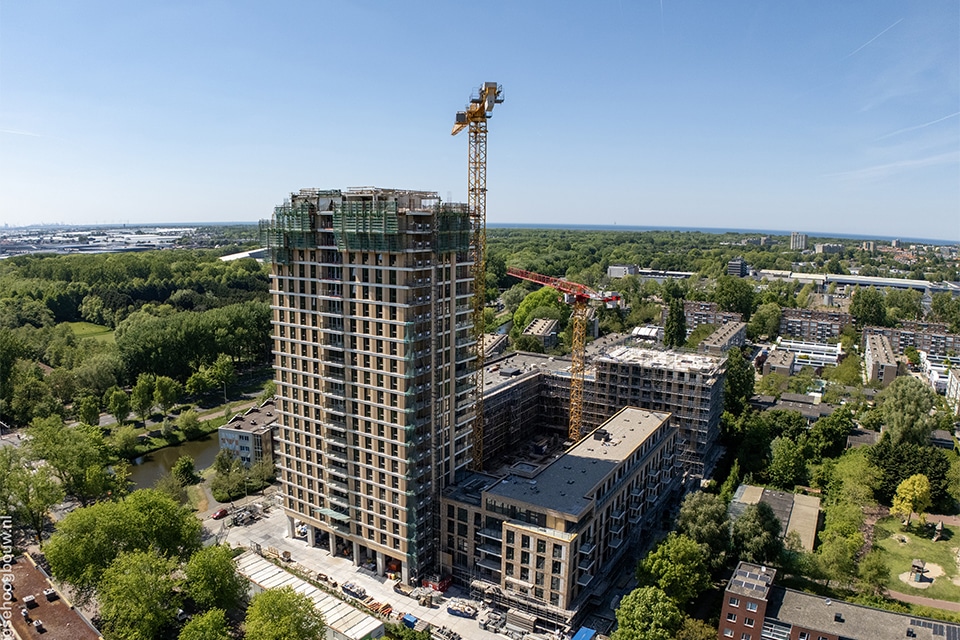
Lean build on Netherlands' first all-electric hospital
The new building for Isala Diaconessenhuis and Zorggroep Noorderboog in Meppel is a project that is attracting national attention: a leanly designed and efficiently built gas-free regional hospital with rehabilitation clinic. With the construction of the new medical complex in the 'armpit' of the A28 and A32 freeways, residents from the wide surroundings of Meppel will be able to visit one of the most modern hospitals in the Netherlands from the second quarter of 2022.

Besides the realization, construction consortium TDE, consisting of Trebbe, Dura Vermeer and ENGIE, will take care of the maintenance and operation of the new building for a period of 25 years. "We built this hospital on schedule in 2 years," says Adri van Veggel (business manager Dura Vermeer Bouw Hengelo) on behalf of TDE. When commissioned, the new hospital will meet the highest requirements in terms of comfort, patient-friendliness, sustainability, hygiene and flexible use of space, according to the builders. Thus, Isala Meppel will be the first all-electric hospital in the Netherlands. The building has a gross floor area of 17,583 m² for hospital care; Noorderboog's geriatric rehabilitation clinic has 64 clinical places and 5,337 m². The building components for Isala and Noorderboog will be realized as one unit, next to the old hospital. "Lean designed, and that is: minimal traffic spaces c.q. walkways for patients and staff."

WKO
Architectural firm Vakwerk designed the hospital in collaboration with engineering firm Deerns. It will feature a 7x 24-hour emergency room, an OR complex with 4 operating rooms, 1 treatment room OR class 2, a 100-bed clinic and 24-bed day care, as well as facilities for dialysis, ophthalmology, LAB rooms, radiology and nuclear medicine. Sustainability plays a major role in the design: the building no longer has a gas connection and runs on solar panels and a thermal energy storage system. A cleverly designed hospital with extremely reliable operations, realized with a relatively traditional construction method. The first pile for the foundations was driven in February 2020; both facilities will be completed by the end of 2021. "The schedule is going completely according to plan," Van Veggel said in mid-October. "We are currently working on completion and final admissions, which will allow the building to be delivered by the end of this year."

Efficient construction method
Of course, extensive installation provisions have been made for sustainable systems, and architectural sections such as the OR complex require extra attention. In the Executive Design, this does not lead to specifics, according to Van Veggel. TDE is executing the design by Vakwerk Architects. Royal HaskoningDHV was structural engineer of the Final Design; Lucassen is elaborating structural engineer on behalf of TDE. "The building was accepted as a DO and elaborated to UO within the construction consortium, so optimizations took place at most in the materialization. The relationship with the hospital in the construction organization is direct and runs smoothly."
The construction method is based on a pile foundation on sandy soil, a mix of precast and poured structural parts finished with anhydrite screeds. Aluminum flashing or profile cladding (Aluform) was used as the main finish. The interior walls are mostly metal stud.

Green hospital
Isala/Noorderboog will have a green roof garden on the common plinth in addition to various roof-related installations and structures on the individual building sections. In doing so, the architects have used the surroundings as a source of inspiration. In the new hospital, patients are surrounded by daylight and have a view of the nearby Reest valley. According to the designers, the building blends into the rural surroundings. By mid-March 2022, the hospital should be moved in. TDE will then remain responsible for architectural and installation maintenance for another 25 years, with ENGIE ensuring energy performance in the Netherlands' first all-electric hospital. "In two years we put up a fully functioning building for commissioning. It has become a compact whole, both in design and execution," Van Veggel concludes.
- Principals Isala and Noorderboog
- Design Vakwerk Architects and Deerns
- Construction Royal HaskoningDHV (DO); Lucassen bouwconstructies (elaborating).
- Implementation Building consortium TDE (Trebbe, Dura Vermeer, ENGIE)
- Construction period early 2020 - late 2021
- Program 17,583 sq. ft. hospital and 5,337 sq. ft. rehabilitation center




